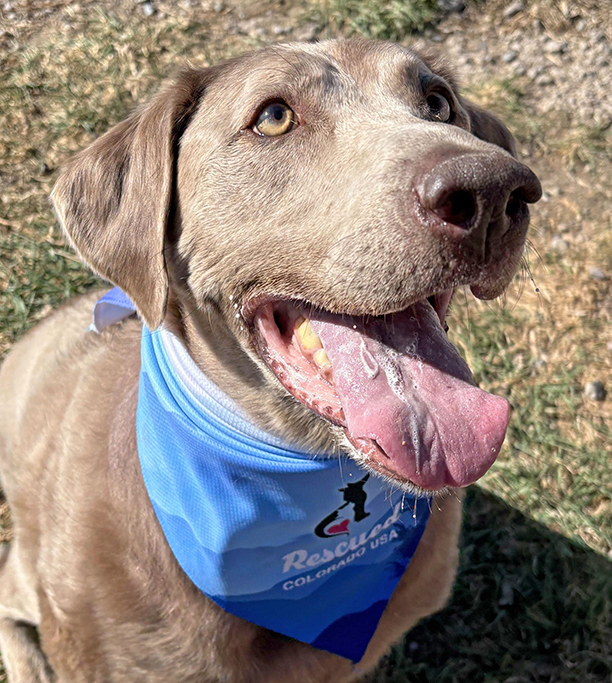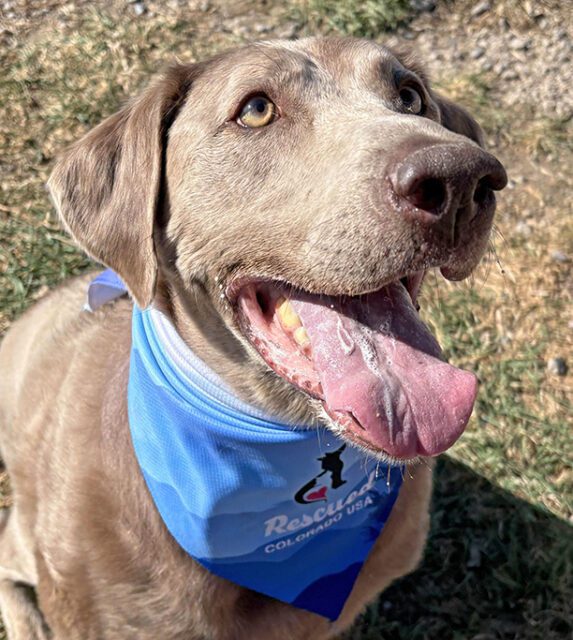
16 Apr Second Chance: Loose Leash Walking + Sale at Sit, Stay, Shop!
For 30+ years, the Animal Resource Center and Shops of Second Chance Humane Society (SCHS) have been serving Ouray, San Miguel, and Montrose Counties. Adoption hours are from Wednesday to Sunday, 11 a.m. to 5:30 p.m. View shelter pets and services online at www.secondchancehumane.org.
“Connecting Pets, People, and Community While Saving Lives.”
View shelter pets and services online: www.adoptmountainpets.org.
Donate here or mail to: PO Box 2096, Ridgway, CO, 81432.
At Sit, Stay, Shop! in Telluride: Second Chancre loves locals! Half-Off entire store, April 21-27.
Go here for more options from Second Chance.



Mia needs a forever phone.
Teaching a dog to walk politely on a leash is a journey. Leash pulling is natural for dogs, and changing that behavior takes time and consistency. Some dogs will grasp the concept quickly; others need more patience and repetition.
Think like your dog, and it will be easier. Dogs move faster than humans and experience the world through scent and exploration. They pull to investigate sights and smells. Walks are for your dog’s exercise and mental stimulation. Allow them to sniff, explore, and experience the world.
To start, make sure to have the right equipment. A wide, flat collar is best, providing control without putting too much pressure on the neck. Leashes are not one-size-fits-all. In a crowded area or when doing focus training, use a 6-foot leash; a 10-foot or longer leash should be used when in safe, open spaces, allowing for more sniffing and exploring. And, treats are so important. Small, high-value goodies are best.
Begin the training in a low-distraction environment, like indoors at home. Hold a treat near your hip. As your dog moves to follow the treat, say “Let’s go” or your chosen cue. Let him have the treat when in the desired position (near your hip). Repeat while gradually increasing the distance.
Be consistent in managing pulling. If your dog starts to pull, stop walking. Stand still and wait for the leash to slacken. Once the leash is loose, lure your dog back to your side with a treat then continue walking. Another tactic is to change direction. If the dog pulls, turn and walk the other way. That teaches the dog pulling will not get them where they want to go.
Once your dog understands the basics indoors, move to a quiet outdoor area. Be prepared for more distractions and be extra patient, while continuing the same methods as you used indoors.
Remember to allow your dog to explore. Use a longer leash in safe areas and let her explore and sniff. That helps satisfy her instincts and reduces frustration. Reward the dog when they return to your side after exploring.
Consistency and Patience:
• Practice regularly, and be patient and consistent with your training.
• Avoid frustration, as dogs can sense your emotions.
• Keep training sessions positive and upbeat.
Important Considerations:
Harnesses: Some harnesses can be useful for specific situations, but they often encourage pulling. Easy Walk harnesses clip in the front so when your dog pulls they will feel a slight tug on their torso instead of their neck.
Control the head: Controlling the dog’s head provides better control. There are several tools (head halters, gentle leads, etc.) and techniques available. Working with a trainer can help you know what works best for your dog.
Be realistic: Loose leash walking takes time and effort. Celebrate small victories and be patient with your dog’s progress.
Positive Reinforcement: Focus on rewarding good behavior rather than punishing pulling.
Positive reinforcement: Focus on rewarding good behavior rather than punishing pulling.


Sorry, the comment form is closed at this time.